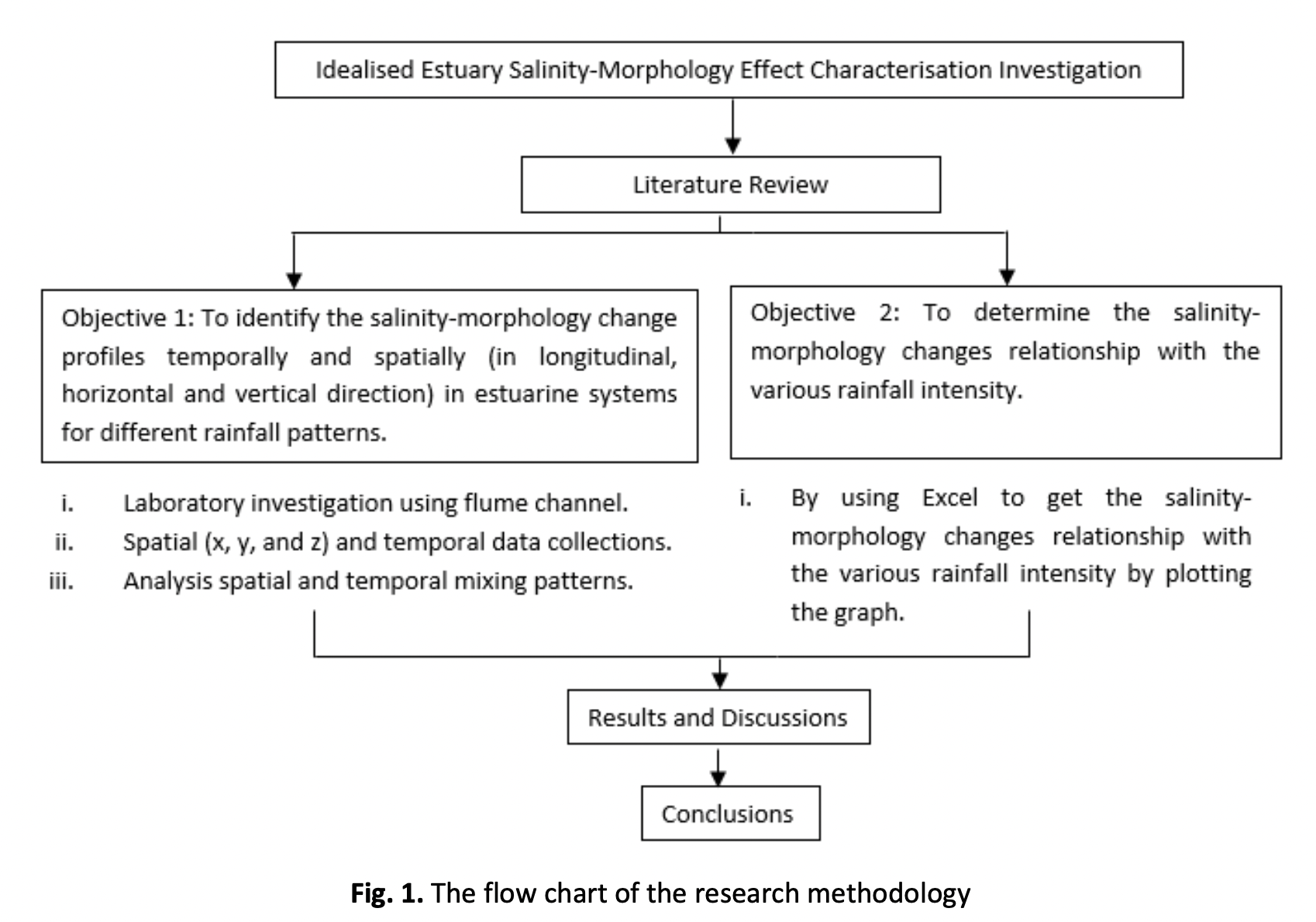Idealised Estuary Salinity-Morphology Effect Characterisation Investigation
DOI:
https://doi.org/10.37934/araset.42.1.93103Keywords:
Salinity Intrusion, Morphology Effect, Estuarine System, Various Rainfall PatternAbstract
Estuaries are bodies of water along the coasts that are formed when fresh water from rivers flows into and mixes with salt water from the ocean. The density of seawater is greater than fresh water and it varies with salinity and temperature. Fresh water tends to float on top of seawater because of its lower density. Human-induced activities like the dredging of shipping lanes along the bottom estuarine, the dumping of industrial wastes into the water system, and shoreline development influence estuarine dynamics which include the mixing process. These activities lead to salinity changes and further adversely affect the estuarine ecosystem. The purpose of this research is to verify how salinity-morphology relations change in an estuarine system under various rainfall patterns, more specifically under extremely high rainfall conditions. The experiment that has been conducted studied the salinity-morphology relationships for a variety of rainfall patterns, most particularly for exceptionally high rainfall conditions, using an idealised channel. In the first part of this research, the morphology changes of the mixing between salt water (estuary) and freshwater (river) for different rainfall patterns, had been investigated in laboratory experiments. Fresh water was released from one end of the flume channel and overflowing over the weir at the other end. Meanwhile, salt water was represented by the red dye tracer released slowly through a weir and intruded horizontally to the upstream as a gravity current. In this experiment, an artificial roughened bed section was used as morphology change. The salinity pattern is plotted using Microsoft Excel. The salinity levels were measured at selected stations along the channel/longitudinal (x-axis), and also in transverse (y-axis) and vertical directions (z-axis) within the time duration. The observed salinity profile showed the difference in salinity level between heavy and light rain conditions with morphology effect where during heavy rain, the salinity level will decrease, hence, the existence of an artificial roughened bed section will affect the time taken for the process of mixing between salt water and fresh water.
Downloads





























